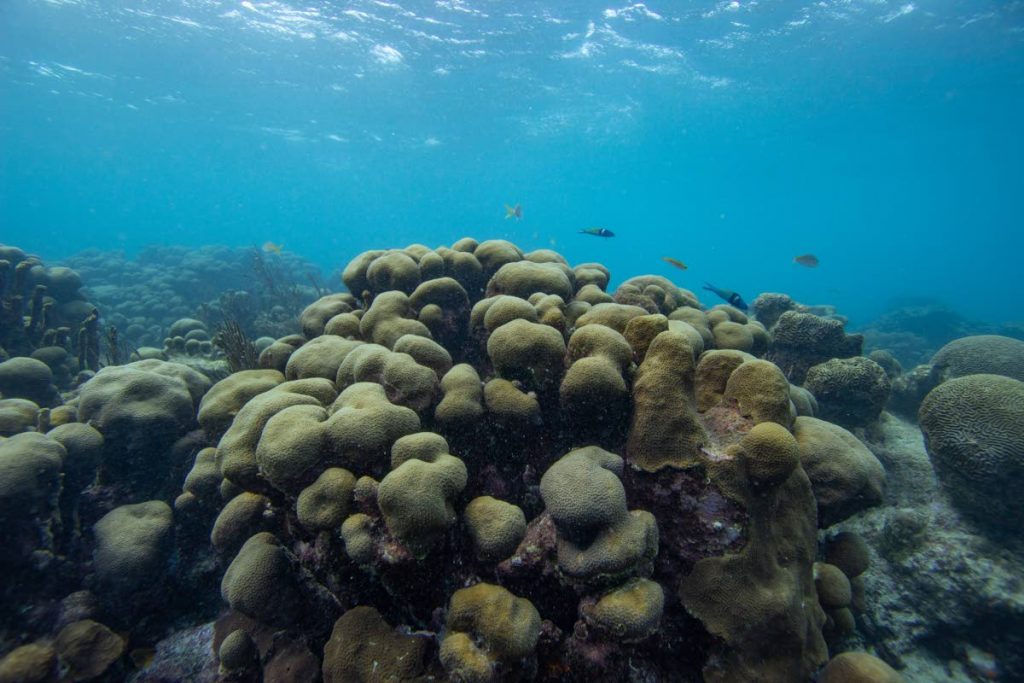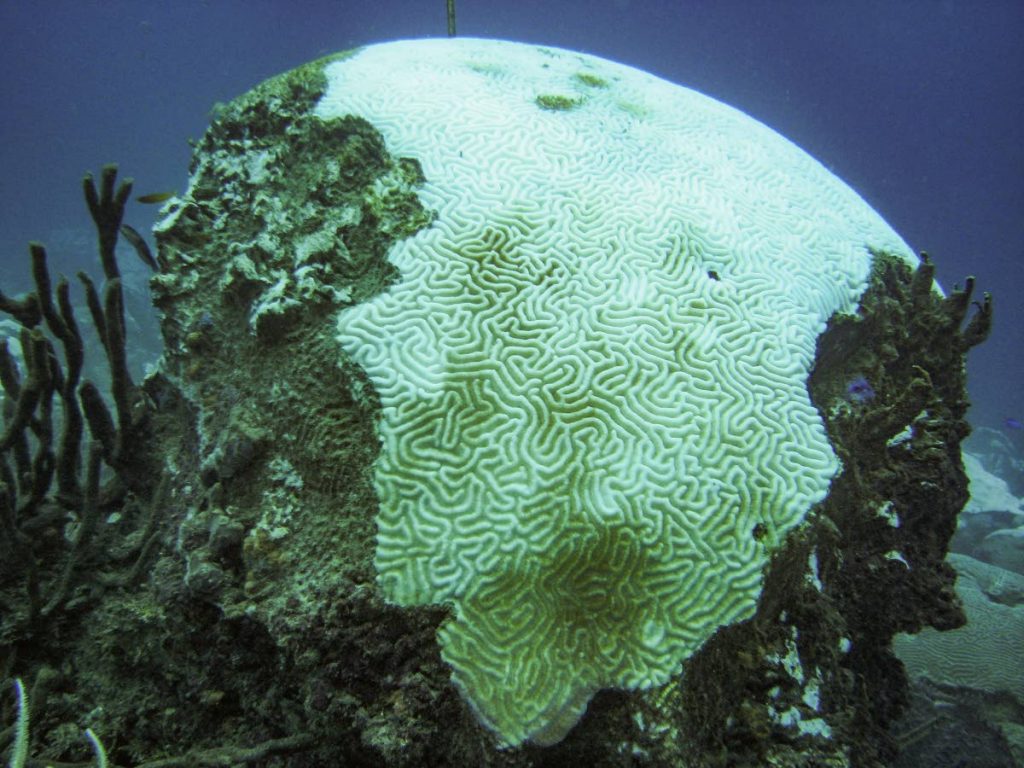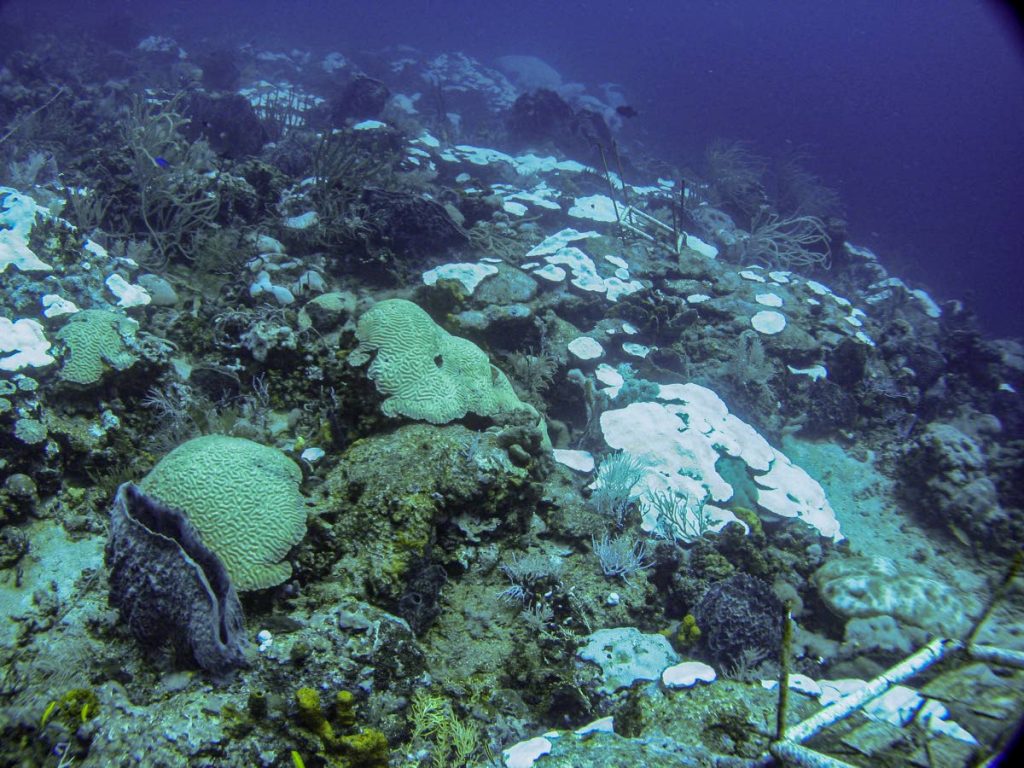Tobago under coral bleaching alert

JABARRI SUPERVILLE
The Institute of Marine Affairs (IMA) is calling for everyone to keep an eye out for changes in Tobago’s coral reefs.
An IMA press release on August 23 said the US National Oceanic and Atmospheric Administration (NOAA) Coral Reef Watch categorised TT’s coral-bleaching stress gauge at “Watch Level,” based on its latest coral-bleaching outlook for the next four months (August to November) for the Caribbean region.

This means that the waters around Tobago are above average sea surface temperature for this time of year. The NOAA predicts that over the next five to eight weeks, Tobago and the rest of the Lesser Antilles have a 60 per cent chance of reaching “Bleaching Alert Level One” – high likelihood of coral bleaching, while the outlook for next nine to 12 weeks indicates a 60 per cent chance of reaching “Bleaching Alert Level Two” – widespread coral bleaching and coral mortality.
But what exactly is coral bleaching?
The release said when corals become stressed, for instance when water temperatures are too warm or too cold, the relationship between the corals and the algae that live inside their tissue breaks down and the algae is expelled from the coral. This loss causes the coral to turn white and is therefore referred to as coral bleaching. The loss of the algae means the corals lose their major source of food and energy; and if unfavourable conditions persist, the coral will starve and eventually die.
Coral reef ecologist and socio-professional at the IMA Dr Anjani Ganase said this is not the first time Tobago has suffered coral loss.
In a phone interview with Newsday, Ganase said Tobago’s coral reefs had suffered from multiple bleaching events in the past, including 2005 and 2010, that have significantly degraded the reef’s health. She said that had proven to and would continue to have great effects on the nation’s ecosystem.

“Corals in the water are like trees in the forests. They provide habitat and haven for about 25 per cent of marine life, including fish. Globally and regionally, fish communities are lower because the habitat is dying.”
She added that the death of Tobago’s coral reefs would affect tourism as well.
“As with many Caribbean islands, tourism is based on beach use. Many people utilise Tobago’s waters for fishing, snorkelling as well as diving and other water activities. The health of the reefs is at a high risk of bleaching and needs to be protected.”
As a result, Ganase said it was important for citizens to keep an eye out for changes in the reefs over the next few months as coral bleaching could happen quickly or slowly.
Caribbean corals are typically shades of brown and green, but once bleaching begins, the corals appear pale and eventually fade to bone white. Bleached corals cannot survive for extended periods without algae and in many cases they die.
Once corals die, macro algae and turf algae, harmful types of algae, are the first things to grow over the coral skeletons and the reefs begin to take on a furry appearance. According to the release, even if corals do not die immediately, they become more vulnerable to infections and diseases that tend to spike after stress events.

People are asked to look out for corals with a black band or patches of white around the coral tissue and partial tissue loss and death.
Fortunately, Ganase said there were ways to aid in reef recovery.
“Healthy reefs can reproduce and create healthy corals, but the environment has to be suitable. Fish, like the parrotfish, feeding on the turf algae can help. However, what is important is curbing the stressors, such as fishing, pollution and exposure to sedimentation run off from land.”
Asked if Tobago’s reefs could return to a completely healthy state, Ganase said we at least have to try.
“We have seen evidence of nature being resilient. But we have to do our part. The system can get worse or you can keep the system stable with a chance of recovery.”
Visitors to the reefs are asked to report any observations of coral bleaching to the IMA, the Department of Marine Affairs and Fisheries, THA, the Environmental Research Institute, Charlotteville, the Buccoo Reef Trust or Environment Tobago, with pictures and notes on the location, depth and extent of bleaching if possible.
For more information, please contact the IMA at 634-4291 ext. 2531 or imadirector@ima.gov.tt

Comments
"Tobago under coral bleaching alert"